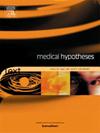出生后血红蛋白P50作为早产婴儿缺氧驱动NEC的替代标志物:P50和NEC风险的机制假说
IF 2.1
4区 医学
Q3 MEDICINE, RESEARCH & EXPERIMENTAL
引用次数: 0
摘要
坏死性小肠结肠炎(NEC)是早产儿发病和死亡的主要原因。尽管进行了数十年的研究,临床医生仍然缺乏一种早期的、基于生理的生物标志物,在临床恶化之前就能发出风险信号。我们假设,在生命最初72小时内持续升高的血红蛋白P50反映了氧气卸载受损和系统性缺氧,特别是影响内脏循环。在2,3-二磷酸甘油酸(2,3- dpg)升高的驱动下,氧解离曲线的右移可能先于乳酸升高,预示着肠道损伤的发生。在机制上,这一途径是由缺氧诱导因子-1α (HIF-1α)稳定和toll样受体4 (TLR4)激活支持的,两者都与NEC发病有关。我们提出了一个由先前数据支持的生理学原理,包括初步观察,并提出了临床和实验方法来验证这一假设。如果得到证实,P50可能是早期NEC风险分层的常规可及、无创生物标志物。本文章由计算机程序翻译,如有差异,请以英文原文为准。
Postnatal hemoglobin P50 as a surrogate marker for hypoxia-driven NEC in preterm infants: a mechanistic hypothesis P50 and NEC risk
Necrotizing enterocolitis (NEC) is a major cause of morbidity and mortality in preterm infants. Despite decades of investigation, clinicians lack an early, physiologically grounded biomarker that signals risk before clinical deterioration. We hypothesize that persistently elevated hemoglobin P50 during the first 72 h of life reflects impaired oxygen unloading and evolving systemic hypoxia, particularly affecting the splanchnic circulation. This rightward shift in the oxygen dissociation curve, driven by increased 2,3-diphosphoglycerate (2,3-DPG), may precede lactate elevation and herald the onset of intestinal injury. Mechanistically, this pathway is underpinned by hypoxia-inducible factor-1α (HIF-1α) stabilization and Toll-like receptor 4 (TLR4) activation, both implicated in NEC pathogenesis. We present a physiologic rationale supported by prior data, including preliminary observations, and propose clinical and experimental approaches to validate the hypothesis. If confirmed, P50 could represent a routinely accessible, noninvasive biomarker for early NEC risk stratification.
求助全文
通过发布文献求助,成功后即可免费获取论文全文。
去求助
来源期刊

Medical hypotheses
医学-医学:研究与实验
CiteScore
10.60
自引率
2.10%
发文量
167
审稿时长
60 days
期刊介绍:
Medical Hypotheses is a forum for ideas in medicine and related biomedical sciences. It will publish interesting and important theoretical papers that foster the diversity and debate upon which the scientific process thrives. The Aims and Scope of Medical Hypotheses are no different now from what was proposed by the founder of the journal, the late Dr David Horrobin. In his introduction to the first issue of the Journal, he asks ''what sorts of papers will be published in Medical Hypotheses? and goes on to answer ''Medical Hypotheses will publish papers which describe theories, ideas which have a great deal of observational support and some hypotheses where experimental support is yet fragmentary''. (Horrobin DF, 1975 Ideas in Biomedical Science: Reasons for the foundation of Medical Hypotheses. Medical Hypotheses Volume 1, Issue 1, January-February 1975, Pages 1-2.). Medical Hypotheses was therefore launched, and still exists today, to give novel, radical new ideas and speculations in medicine open-minded consideration, opening the field to radical hypotheses which would be rejected by most conventional journals. Papers in Medical Hypotheses take a standard scientific form in terms of style, structure and referencing. The journal therefore constitutes a bridge between cutting-edge theory and the mainstream of medical and scientific communication, which ideas must eventually enter if they are to be critiqued and tested against observations.
 求助内容:
求助内容: 应助结果提醒方式:
应助结果提醒方式:


